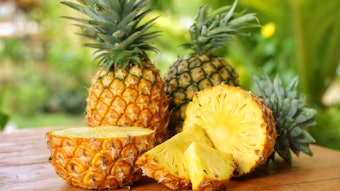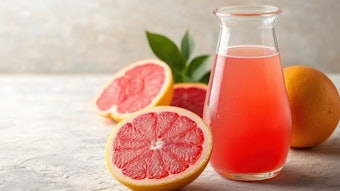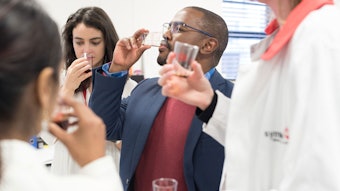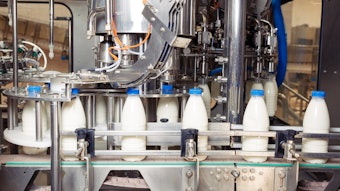
Consumer sentiment and open access to information through digital communication are shifting the debate on the development of bio-based and “natural” products. Around the globe, consumer and governmental backlash against genetically modified organisms (GMO) has generated new and novel opportunities—and challenges—for the delivery of authentic aroma chemical ingredients from microbial sources without the utilization of genetic modification.
As the industry knows, many natural compounds come from scarce and relatively rare natural resources. Industrial biotechnology was a potential solution to this limitation. Genetic modification and manipulation of microorganisms seemed to be a silver bullet for elevating volume, price and utilization pressures on natural compounds in the market. It demonstrated the ability to control nature in a way that fit the paradigm of classical industrial thinking. However, unfettered access to information, concepts and opinions has created a dynamic where upward of 89% of Americans favor the labeling of GMO.a This holds true across the pond, as well, with more than 63% of the E.U. governments instituting full bans on GMO crops in response to strong consumer dislike for known GMO ingredients.
Is this the beginning of the end of industrial biotechnological solutions for food ingredients and aroma chemicals? The answer is no. A certain market segment will always accept genetically modified solutions. However, there are many biotechnology solutions that do not require the direct genetic modification of organisms, which creates an opportunity for those who want to search for and create solutions that partner with nature instead of control nature.
The Polyculture Approach
In this innovative space, we can explore advanced uses of biomimicry, cradle-to-cradle thinking, eco-based manufacturing and permaculture to create sustainable pathways to meet consumer desires for natural and non-GMO ingredients. Unfortunately, there is no silver bullet leading to any one approach over another. To meet the demands of a growing world population, we need to take the “golden buckshot” approach.
Non-GMO biotechnology-based solutions can focus on utilizing microbial ecosystems, or polyculture, to overcome traditional problems of yield and feedstock utilization by following the tenets outlined by David Holmgren in his book, Permaculture: Principles and Pathways Beyond Sustainability. By using a microbial ecosystem approach, many of the estimated 98% of uncultivable bacteria become potentially available for biotechnology-based solutions.
The primary challenges of pursuing non-GMO biotechnology solutions include target products, predictability, yield and feedstock sources.
An existing example of a successful non-GMO biotechnology solution is nitrite from high nitrate celery juice. This is a simple microbial bio-conversion—generally called biocatalysis—for meat preservation systems to make a “no nitrate added” meat product. Another example is the production of propionic acid for preservative-free breads fermentation pathways. These pathways naturally lend themselves well into the world of aroma chemicals because the organisms producing organic acids can be used to generate natural solvents and esters.
When searching for more complex and diverse pathways for aroma chemicals, one need not look further than sourdough bread for the inspiration for polyculture flavor fermentation or biocataylsis. The mixture of microorganisms and mother culture highly influences the flavors and flavor notes of a target bread production and at least one company has commercialized the sourdough bread process to capture natural flavoring aroma chemicals for the bakery and grain-based industries.
Polyculture ecosystems create a complex mixture of target products in a generally predictable volume. Organisms within an ecosystem can break down a variety of feedstocks because of a mixture of microorganisms, which possess metabolic pathways to break down cellulose and other biopolymers—in addition to traditional sugars, fats and proteins. By identifying target metabolic pathways in nature for products and bringing them into the ecosystem as either pure culture or polyculture additions, thousands of products can be identified and targeted.
Challenges in Polyculture Fermentation
The most complicated aspects of polyculture fermentation fall into handling predictability and yield. Product predictability can be achieved by studying the metabolites in the ecosystem environment, meta-genomic studies and metabolic pathway analysis. However, there is significant white space in this realm and it does require fundamental research to map out fermentation behaviors and shifts.
Yield is a more complex issue, with some pathways offering robust yields, while others require novel strategies to cost effectively recover target products from the soup of materials produced. One strategy is the subsidization of high-volume, lower-value compounds with the production of higher-value, low-volume compounds, such as supplementing the production of natural esters with the co-manufacturing of various mercaptans.
This complex endeavor does not come without reward and opportunity. New intellectual property development for existing and new compounds coupled with non-GMO production pathways is one of the greatest assets of a new paradigm in innovative thinking. When one can develop new pathways to products, new applications and opportunities present themselves.
Largely due to the desire for clean labeled products, interest is high in the development and production of target existing aroma compounds from feedstocks that can lend themselves to having a “cultured” identity for a partner. Because we have access to ecosystems that can break down an array of feedstocks, we can use almost any side stream or biomass waste from a partner, allowing for greater flexibility in starting material choices.
Perhaps the most important aspect of pursing non-GMO biotechnology strategies is the ability to harness and produce new and novel compounds in creative ways. The myriad approaches to non-GMO biotechnology strategies include natural pure cultures, novel aging techniques, passive chemistry and new enzymes and metabolic pathways. Because of the extreme diversity in nature and, therefore, in microbial environments, there are many degradative and additive pathways that have yet to be exploited by traditional microbiologists and chemists. The information in these new pathways can be identified and brought forward to create a new tool chest of natural, non-GMO compounds for the modern perfumer and flavorist.
Those looking for inspiration for non-GMO biotechnology solutions should study the principles of biomimicry, permaculture and green chemistry, which can lead to solutions and improvements outside of the traditional biotechnology lens. Studying the ways in which ecosystems and ecologies adapt, perform and produce can generate marvelous insights for new product development.











